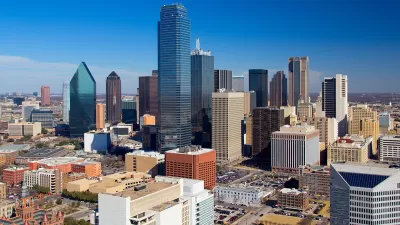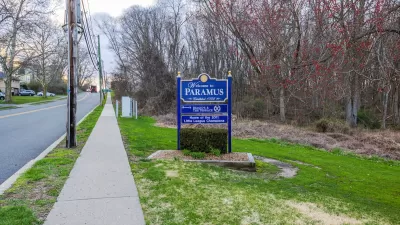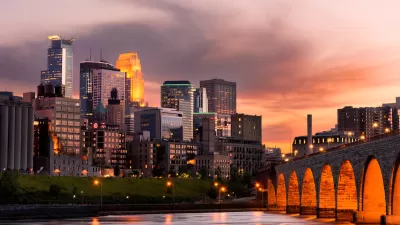Building on the roughly 76 million square feet of vacant land already zoned for multifamily housing could create badly needed rental housing units and slow the growth of rent prices.

If Dallas were to develop the 475 vacant lots already zoned for multifamily housing in the city, it could build as many as 100,000 new housing units, reports Alexandra Both in an analysis on RentCafe. Both points out that “That’s more than the total number of apartments built in the city since 2000.”
RentCafe created a map of vacant lots and zoning restrictions in Dallas, revealing the zip codes that could house the most new rental housing. The RentCafe analysis found that, in addition to the 76 million square feet of vacant parcels already zoned for multifamily housing, “in total, Dallas has more than 494 million square feet of vacant land scattered around 3,152 parcels that could be used to build more housing” if rezoned to allow multifamily development.
According to Both, “Through strategic rezoning, the city could unlock even more potential for affordable and diverse housing options, that would not only alleviate the housing shortage but also drive Dallas towards a more equitable future.”
Developers blame the city’s long, uncertain permitting process and high fees for discouraging more construction. A bill proposed in the state legislature, House Bill 14, would let developers use a third party contractor to perform reviews and approve permits if the city doesn’t do so within a 15 day deadline.
FULL STORY: Unlocking Dallas’ Housing Potential: Existing Vacant Land Could Hold 100,000 New Apartments

Study: Maui’s Plan to Convert Vacation Rentals to Long-Term Housing Could Cause Nearly $1 Billion Economic Loss
The plan would reduce visitor accommodation by 25,% resulting in 1,900 jobs lost.

North Texas Transit Leaders Tout Benefits of TOD for Growing Region
At a summit focused on transit-oriented development, policymakers discussed how North Texas’ expanded light rail system can serve as a tool for economic growth.

Using Old Oil and Gas Wells for Green Energy Storage
Penn State researchers have found that repurposing abandoned oil and gas wells for geothermal-assisted compressed-air energy storage can boost efficiency, reduce environmental risks, and support clean energy and job transitions.

Private Donations Propel Early Restoration of Palisades Playground
Los Angeles has secured over $1.3 million in private funding to restore the Pacific Palisades playground months ahead of schedule, creating a modern, accessible space that supports community healing after recent wildfires.

From Blight to Benefit: Early Results From California’s Equitable Cleanup Program
The Equitable Community Revitalization Grant (ECRG) program is reshaping brownfield redevelopment by prioritizing projects in low-income and environmental justice communities, emphasizing equity, transparency, and community benefits.

Planting Relief: Tackling Las Vegas Heat One Tree at a Time
Nevada Plants, a Las Vegas-based nonprofit, is combating the city’s extreme urban heat by giving away trees to residents in underserved neighborhoods, promoting shade, sustainability, and community health.
Urban Design for Planners 1: Software Tools
This six-course series explores essential urban design concepts using open source software and equips planners with the tools they need to participate fully in the urban design process.
Planning for Universal Design
Learn the tools for implementing Universal Design in planning regulations.
Ascent Environmental
Borough of Carlisle
Institute for Housing and Urban Development Studies (IHS)
City of Grandview
Harvard GSD Executive Education
Toledo-Lucas County Plan Commissions
Salt Lake City
NYU Wagner Graduate School of Public Service





























